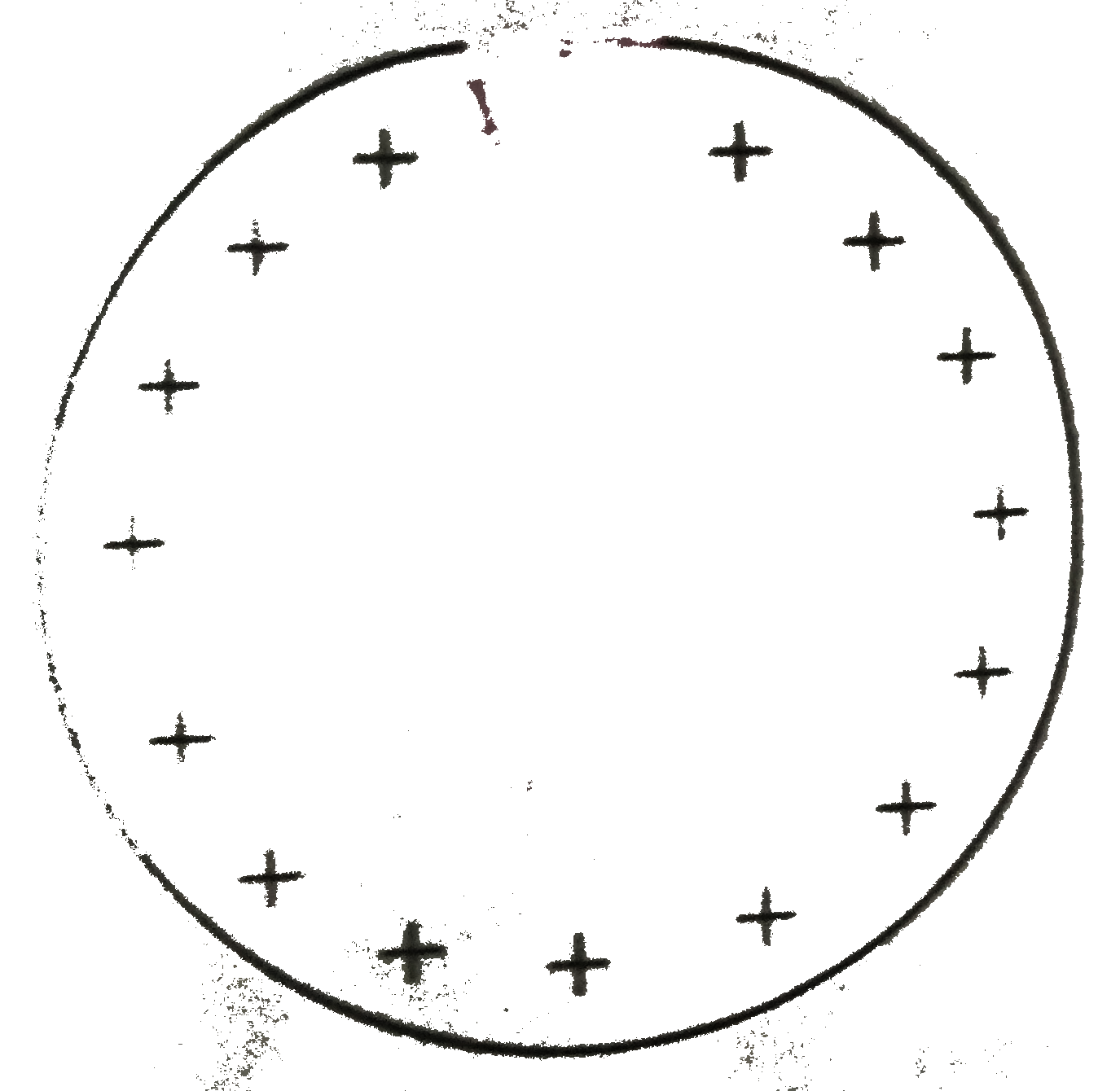Planes x= 2 and y = -3 , respectively , carry charge densities10nC/m2. If the line x=0,z=2 carries charge density 10πnC/m, calculate the electric field vector at (1,1,−1).
To find the electric field vector at the point (1, 1, -1) due to the given charge distributions, we will follow these steps:
Step 1: Identify the charge distributions
We have:
1. A plane at x=2 with a charge density of 10nC/m2.
2. A plane at y=−3 with a charge density of 10nC/m2.
3. A line at x=0,z=2 with a linear charge density of 10πnC/m.
Step 2: Calculate the electric field due to the plane at x=2
The electric field E2 due to an infinite plane sheet with surface charge density σ is given by:
E=σ2ϵ0
Where:
- σ=10×10−9C/m2
- ϵ0=8.85×10−12C2/N m2
Calculating E2:
E2=10×10−92×8.85×10−12=10−81.77×10−11≈564.97N/C
The direction is towards the negative x-axis (since the charge is positive).
Thus,
E2=−564.97^iN/C
Step 3: Calculate the electric field due to the plane at y=−3
Using the same formula, the electric field E3 due to the plane at y=−3 is also:
E3=10×10−92×8.85×10−12≈564.97N/C
The direction is towards the positive y-axis.
Thus,
E3=564.97^jN/C
Step 4: Calculate the electric field due to the line charge at x=0,z=2
The electric field E1 due to an infinite line charge with linear charge density λ is given by:
E=2kλr
Where:
- k=9×109N m2/C2
- λ=10π×10−9C/m
The distance r from the point (1, 1, -1) to the line (0, 1, 2) is:
r=√(1−0)2+(1−1)2+(−1−2)2=√1+0+9=√10
Calculating E1:
E1=2×9×109×10π×10−9√10=180π√10≈56.55πN/C≈177.57N/C
The direction of E1 is from the line charge to the point (1, 1, -1), which can be represented as:
^r=(1−0)^i+(1−1)^j+(−1−2)^k√10=^i−3^k√10
Thus,
E1=180π√10(^i−3^k√10)=18π^i−54π^k
Step 5: Calculate the net electric field
Now, we can sum the electric fields E1, E2, and E3:
Enet=E1+E2+E3
Substituting the values:
Enet=(18π−564.97)^i+564.97^j−54π^k
Calculating Enet:
Enet≈(−508.45)^i+564.97^j−169.56^k
Final Result
Thus, the electric field vector at the point (1, 1, -1) is:
Enet≈−508.45^i+564.97^j−169.56^kN/C
We have:
1. A plane at x=2 with a charge density of 10nC/m2.
2. A plane at y=−3 with a charge density of 10nC/m2.
3. A line at x=0,z=2 with a linear charge density of 10πnC/m.
The electric field E2 due to an infinite plane sheet with surface charge density σ is given by:
- σ=10×10−9C/m2
- ϵ0=8.85×10−12C2/N m2
Using the same formula, the electric field E3 due to the plane at y=−3 is also:
The electric field E1 due to an infinite line charge with linear charge density λ is given by:
- k=9×109N m2/C2
- λ=10π×10−9C/m
Now, we can sum the electric fields E1, E2, and E3:
Thus, the electric field vector at the point (1, 1, -1) is:
Topper's Solved these Questions
- BOOK - AAKASH INSTITUTE ENGLISHCHAPTER - ELECTRIC CHARGES AND FIELDS EXERCISE - comprehension3videos
ELECTRIC CHARGES AND FIELDS
- BOOK - AAKASH INSTITUTE ENGLISHCHAPTER - ELECTRIC CHARGES AND FIELDS EXERCISE - SECTION-I(SUBJECTIVE TYPE QUESTIONS)2videos
ELECTRIC CHARGES AND FIELDS
- BOOK - AAKASH INSTITUTE ENGLISHCHAPTER - DUAL NATURE OF RADIATION AND MATTER EXERCISE - ASSIGNMENT (SECTION-D)10videos
DUAL NATURE OF RADIATION AND MATTER
- BOOK - AAKASH INSTITUTE ENGLISHCHAPTER - ELECTROMAGNETIC INDUCTIONEXERCISE - ASSIGNMENT(SECTION -D) Assertion-Reason type Question)15videos
ELECTROMAGNETIC INDUCTION
Similar Questions
A slab of a material of dielectric constaant 2 is placed between two identical parallel plates. One of the plates carries total charge density +2mC/m2 and the other plate carries total charge density -4mC/m2 the magnitude of electric field inside the dielectric in (in 1011N/C) Take ε0=809×10−12Nm2/C2)
View SolutionA ring of charge with radius 0.5m has 0.002π m gap. If the ribg carries a charge of +1C the electric field at the center is
 View Solution
View SolutionThe line 3x5−2y3+1=0contains the point (m,2m−1), calculate the value of m.
View SolutionA point charge q=−8.0nC is located at the origin. Find the electric field vector at the point x=1.2m,y=−1.6m.
View SolutionAn infinite thin plane sheet of charge density 7.08×10−11(C/m2) is held in air. Find the electric field at a point very close to the sheet.
View SolutionA charge q=−2.0μC is placed at origin. Find the electric field at (3m,4m,0).
View Solution(a) Using Gauss's law, derive an expression for the electric field intensity at any point outside a uniformly charged thin spherical shell of radius R and charge density σC/m2. Draw the field lines when the charge density of the sphere is (i) positive, (ii) negative.
(b) A uniformly charged conducting sphere of 2.5 m in diameter has a surface charge density of 100 μC/m2. Calculate the
(i) charge on the sphere
(ii) total electric flux passing through the sphere.View SolutionTwo particles A and B, having opposite charges2.0×10−6 and −2.0×10−6C , are placed at a separaton of 1.0 cm.(a) write down the electric dipole moment (b) Calculate the electric field at a point on the axis of the dipole 1.0 m away from the centre. (c ) Calculate the electric field at a point on the perpendicular bisector of the dipole and 1.0 m away from the centre.
View SolutionAn infinite line charge produces a field of 9×104NC at a distance of 2cm. Calculate the linear charge density.
View SolutionA proton is released from rest, 10 cm from a charged sheet carrying charged density of −2.21×10−9C/m2. It will strike the sheet after the time (approximately)
View Solution

